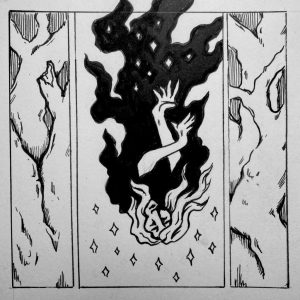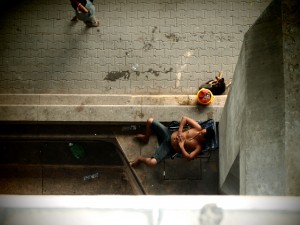Poor Things: Why did Steampunk Barbie Get All the Awards?
by Thomas Greany | February 23, 2024
Conversations with my girlfriend outside the cinemas at which we saw Barbie and Poor Things have merged into a feverish mixture of hot and cold — the warmth of the summer and the biting cold of a Scottish winter. If memory serves, though, she asked the same questions on the 21st of July as she did on the 12th of January: did that liberate women or lock them up?
The sets of Barbie and Poor Things were constructed, by hand, in the real world. For two films that rely so heavily on the unreal, this is perhaps a surprise. But to Yorgos Lanthimos and Greta Gerwig, the directors of these two pictures, a decisive move away from Marvel-esque CGI was deemed central to the realisation of both projects. In recent interviews, Margot Robbie noted Gerwig’s insistence on the concept of the “authentically artificial” in the film’s set design, and Yorgos Lanthimos remarked that “every set was built in studio.” Lanthimos and Gerwig wanted to create spaces for liberation; Lanthimos even aligned cinematography with the woozy fisheye of his protagonist’s mind’s eye. But perhaps Bella and Barbie, the protagonists of these two films, are trapped within worlds that claim to be theirs, but are in fact another’s.
Both films are led by female protagonists who inhabit consciously constructed worlds. In Barbie’s case, this is the commercialist construct of a major corporation, Mattel, which deals in the sales of plastic toys. As much as Sarah Greenwood, Barbie’s set designer, was creating something ‘authentic’ when she put forward plans for the film’s hot pink set, she was partaking in Mattel’s specific brand of authenticity, which relies on creating an endless landscape of new, sellable items. Alongside the construction of this pink world runs the unravelling of Barbie’s story, a path to self-knowledge not at all dissimilar to the path trodden by Bella Baxter, the protagonist of Poor Things. In both cases, a kind of childish naivete is point A, and an embodied and complex sense of womanhood is point B — but it is men who ferry these women from primary to secondary location.
Barbie and Bella exist in worlds created by men—one by a male-dominated corporation and the other in the dystopian townhouse-turned-surgery owned by a man Bella calls God (short for Godwin)—both have their bitter male inferiors (Ryan Gosling as the dispensable Ken; Mark Ruffalo as the sleazy Duncan Wedderburn). Perhaps most importantly of all, these are women who men manipulate and make strange, physically and otherwise. No ‘normal’ woman is allowed to discover themselves and gain a respectable place in society; only the ones who have been made unrepresentative by male frameworks of knowledge and power—whether corporate or scientific (my girlfriend’s point that one, not mine).
But perhaps Barbie does a better job of avoiding the strictures and structures of male power more than Poor Things. The latter is based on a 1992 novel of the same name with self-consciously political intentions. It makes Bella Baxter’s body a political machine, a kind of modern-day Frankenstein’s monster given the God(win)-given task of curing Scotland of its social and sexual ills. Although Lanthimos made the bold decision to remove Scotland from the picture in its entirety, his film and Emma Stone’s performance communicate similar ideas. Barbie, although not clad in the steampunk seriousness of its wintry counterpart, grapples with its serious subject matter head on, and plays on childish registers and aesthetics to contrast what is a grave matter of social and political importance.
The Academy of Motion Picture Arts and Sciences is another institution in which men play a leading role. With Barbie, they have been given the unique opportunity to shun a film whose content they dislike in reference to its crude, corporate, pink packaging. Although the jury is still out on the question of whether Poor Things is a film that liberates or locks up women, the Academy has leapt on it in the knowledge that they will be able to enjoy its sex scenes as they clink champagne flutes and call it high art.∎
Words by Thomas Greany.




